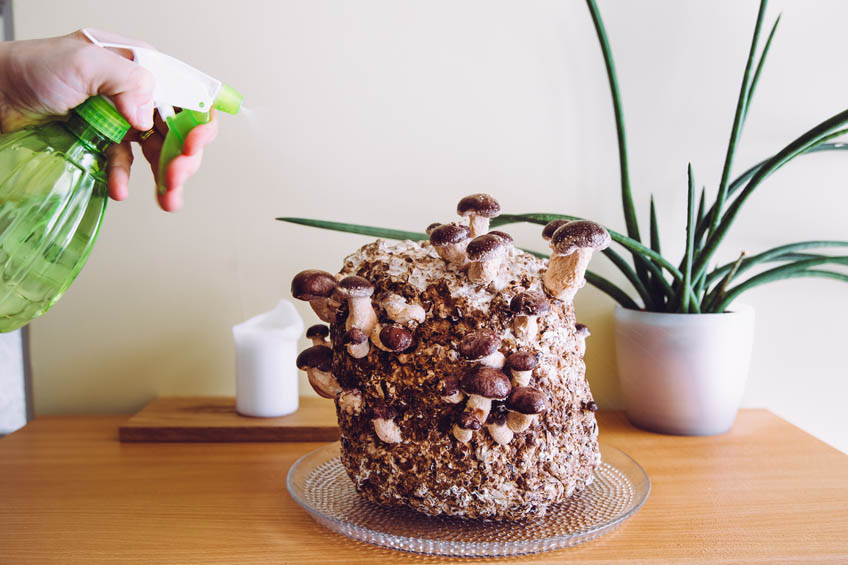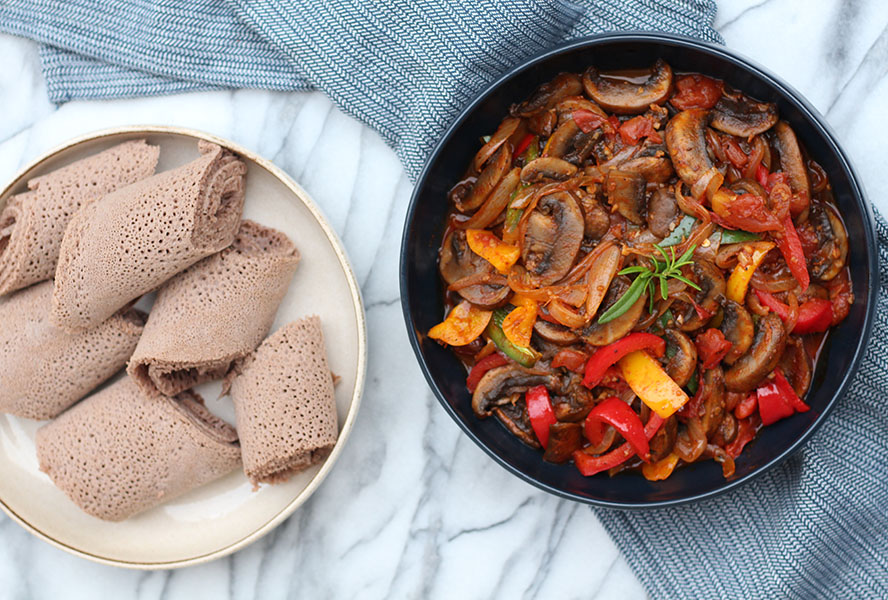
Whether you’re a mushroom-obsessed home cook or an urban-dweller with no garden space, growing your own mushrooms can be a rewarding hobby. With no light or soil required, cultivating your favourite fungi is also easier than you might think, particularly with the help of beginner-friendly mushroom growing kits. These tips will help get you started growing mushrooms at home, from mild white buttons to woodsy shiitakes.
What kinds of mushrooms can I grow at home?
Most types of mushrooms commonly used in cooking can be grown at home, including reishi, lion’s mane, wine caps, white button, oyster and shiitake. Oyster mushrooms are a popular choice for newbies because they’re resilient, so you can typically count on harvesting a few even if you have yet to achieve mushroom growing mastery. They’re wonderful to have on hand for cooking Asian-inspired dishes like this yaki udon.

Get the recipe: Mushroom Yaki Udon
How mushroom growing kits work
To understand how mushroom growing kits work, it can be helpful to know the basics of how mushrooms grow. What seeds are to plants, spores are to mushrooms. Seeds are nourished by soil, while spores are sustained by substances like sawdust, wood chips, grain or straw. Under the right conditions, spores form mycelium, which look similar to the roots of a plant, and mycelium produce mushrooms.
Mushroom growing kits take the fuss out of kicking off this growth process. They typically come with a growing medium, such as a log or a block of sawdust, that’s already embedded with spores or mycelium. For example, Guelph-based Go with the Grow sells pink and blue oyster growing kits on a substrate made with sawdust and organic soybean hulls. The stage is set, so all you need to do is create the ideal environment for your mushrooms to grow.
How to grow mushrooms using your kit
Most mushroom growing kits are designed with beginners in mind. Mushrooms thrive in dark, cool, humid conditions, so you’ll want to place your kit in a shady spot, such as in your basement or under your kitchen sink. You’ll also need to regularly spray the growing medium with water – most kits recommend daily – to keep it moist.

Getty
You can also boost your chances of striking mushroom gold by using a humidity tent. Some brands, such as Grow Mushrooms Canada, sell kits with humidity tents. Alternatively, you can make your own by poking holes in a plastic bag and then draping it over the kit. You might need to prop the bag up with chopsticks or another support if it doesn’t tent naturally around your kit. The bag will help keep the growing environment from drying out, while the holes will maintain essential airflow.
How to harvest your mushrooms
Let’s start with a little lingo so you’ll feel like a mushroom growing pro: When the mycelium produces mushrooms, it’s called “fruiting,” while a “flush” describes the production of multiple mushrooms at one time.
Depending on the type you choose, your first flush of mushrooms will be ready to harvest in as little as a few weeks. The right time to harvest your mushrooms is after their caps open. The edges of the caps should still be a little curled under. Mushrooms often grow quickly, so pay close attention to your kit so you don’t miss the optimal harvest time, which is before the caps flatten. You’ll likely find your mushrooms are a little drier if you pick them after the caps are no longer curled.

Get the recipe: Ethiopian Mushroom Stir-Fry
Harvesting a mushroom requires a little more finesse than yanking them out of the growing medium, which can damage any surrounding mushrooms that are still developing. Instead, wrap your hand near the base of the mushroom and twist or spin to pop it out. You can also use a knife, if you prefer.
After you’ve harvested your first flush of mushrooms, you can continue spraying your kit with water. Most kits will yield a second, third, or fourth fruiting, although you’ll likely get a smaller number of mushrooms each time as the kit’s nutrients are gradually used up.
Much like caring for plants, growing mushrooms is an art and it can take time to find your stride. With a little patience and persistence, however, you’ll be reaping the fruits – er, mushrooms – of your labour in no time.
Related: A Guide to Dried Black Mushrooms
